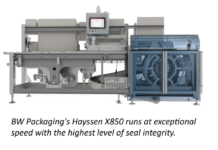
A new study by the International Crops Research Institute for the Semi-Arid Tropics (ICRISAT) and the Indian Council of Agricultural Research – All India Coordinated Research Project on Pearl Millet (ICAR-AICRP) suggests a re-evaluation of how and where pearl millet is grown in India due to changing climate conditions.
Pearl millet, an essential cornerstone of India’s food security, finds itself at a critical juncture.
Amid shifting weather patterns and evolving agricultural priorities, this study urges a timely revision of the classification criteria governing pearl millet cultivation zones, originally established back in 1979.
This study, featured in a special issue of the Agronomy Journal, used data from ICRISAT’s District Level Database (DLD) to carefully re-examine the entire system.
Director general of ICRISAT Jacqueline Hughes said that with climate change now a permanent reality, it is imperative to recalibrate the approach towards understanding and nurturing this vital crop for dryland communities.
“This new classification system aims to optimize pearl millet production, to effectively assist policymakers, researchers, and farmers make better evidence-based decisions,” Hughes said.
The study used digital technology and crop models to re-evaluate the zones, creating a “digital twin” of the pearl millet system.
This digital twin helps design crops and strategies tailored to the current and future climate conditions of each region.
“This collaborative effort with ICRISAT has led to innovative tools that can greatly improve pearl millet farming, including the selection of new testing sites,” said Tara Satyavathi, director of ICAR-Indian Institute of Millets Research and Project Coordinator of ICAR-AICRP on Pearl Millet.
Currently, India’s zones are based on rainfall and soil type: A1 for arid regions in Rajasthan, A for semi-arid regions in North and Central India, and B for semi-arid regions with heavy soils in South India.
“The proposed new zones take into account the complexity of the system in response to changing climate conditions. While the existing zoning for the A1 and B zones is generally still applicable, the suggestion is to modify the A zone.
“The existing A zone can be broken down into three distinct subzones: G, AE1, and AE2, covering the states in North and Central India. The G zone encompasses Gujarat, AE1 covers East Rajasthan and Haryana, and AE2 covers Uttar Pradesh,” said Vincent Garin, Post-Doctoral Fellow at ICRISAT.
The new zoning framework identifies ‘AE1’ as the core of India’s pearl millet production, where favorable climate and soil conditions, along with improved pearl millet varieties, have led to significant yield increases.
‘AE2’ shows promising yield progress and better farming practices, offering potential for export-oriented gains.
The G zone is experiencing more rainfall due to climate changes, which may lead farmers to shift towards cash crops and limit pearl millet cultivation to the summer season.
This research was funded through collaborations between ICAR, ICRISAT, the Swiss National Science Foundation, the Czech University of Life Sciences Prague, and the Crops to End Hunger initiative.
IndiFoodBev — authentic, impactful and influential
An English-language food and beverage processing and packaging industry B2B platform in print and web, IndiFoodBev is in its third year of publication. It is said that the Indian food and beverage industries represent approximately US$ 900 billion in revenues which implies more than 20% of the country’s GDP. Eliminating the wastage on the farmside can help to deliver more protein to a higher number of the population apart from generating sizable exports. The savings in soil, seeds, water, fertilizer, energy and ultimately food and nutrition could be the most immense contribution that country is poised to make to the moderation of climate change.
To improve your marketing and grow sales to the food and beverage processing and packaging industry, talk to us. Our research and consulting company IppStar [www.ippstar.org] can assess your potential and addressable markets in light of the competition. We can discuss marketing, communication, and sales strategies for market entry and growth.
Suppliers and service providers with a strategy and budget for targeted marketing can discuss using our hybrid print, web, video, and social media channels to create brand recognition linked to market relevance. Our technical writers are ready to meet you and your customers for content.
The second largest producer of fruit and vegetables in the world is continuously expanding processing capacities and delivery systems with appropriate innovative technologies. We cover product and consumer trends, nutrition, processing, research, equipment and packaging from farm to thali. Get our 2025 media kit and recalibrate your role in this dynamic market. Enhance your visibility and relevance to existing markets and turn potential customers into conversations. Ask for a sample copy of our bi-monthly in print or our weekly IndiFoodBev eZine each Wednesday.
For editorial info@ippgroup.in — for advertisement ads1@ippgroup.in and for subscriptions subscription@ippgroup.in
Naresh Khanna – 10 February 2025
Subscribe Now











